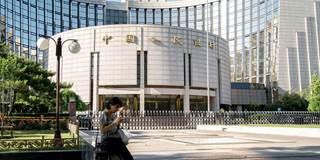Weak demand is dragging down China’s economic growth. And, because the problem lies primarily in financial constraints on the real economy – not an overall cash shortage – the slowdown will be very difficult to reverse.
SHANGHAI – Weak demand is dragging down China’s economic growth. The real problem isn’t a shortage of money: the broad money supply (M2) now exceeds CN¥155 trillion ($25 trillion), or 200% of GDP, and continues to grow by 12-13% annually. Rather, the current slowdown reflects financial constraints on the real economy – a problem that will be difficult to reverse in the near future.
Ironically, these financial constraints have tightened against a background of strong financial-sector growth. Indeed, it is the financial sector’s prosperity, driven partly by the success of market-oriented innovations, that has fueled growth in China’s M2 and credit assets.
This trend can be traced back at least to 2004, when a fast-growing trade surplus and massive capital inflows, as well as relentless exchange-rate appreciation, forced the People’s Bank of China (PBOC) to resort to monetary expansion as a hedge against the resultant risks. Since then, China’s unremitting investment in infrastructure and real estate has fueled domestic demand, absorbing and reinforcing this credit growth. In 2009, China took things a step further, with a massive three-year stimulus plan that expanded bank credit to more than CN¥20 trillion.



SHANGHAI – Weak demand is dragging down China’s economic growth. The real problem isn’t a shortage of money: the broad money supply (M2) now exceeds CN¥155 trillion ($25 trillion), or 200% of GDP, and continues to grow by 12-13% annually. Rather, the current slowdown reflects financial constraints on the real economy – a problem that will be difficult to reverse in the near future.
Ironically, these financial constraints have tightened against a background of strong financial-sector growth. Indeed, it is the financial sector’s prosperity, driven partly by the success of market-oriented innovations, that has fueled growth in China’s M2 and credit assets.
This trend can be traced back at least to 2004, when a fast-growing trade surplus and massive capital inflows, as well as relentless exchange-rate appreciation, forced the People’s Bank of China (PBOC) to resort to monetary expansion as a hedge against the resultant risks. Since then, China’s unremitting investment in infrastructure and real estate has fueled domestic demand, absorbing and reinforcing this credit growth. In 2009, China took things a step further, with a massive three-year stimulus plan that expanded bank credit to more than CN¥20 trillion.